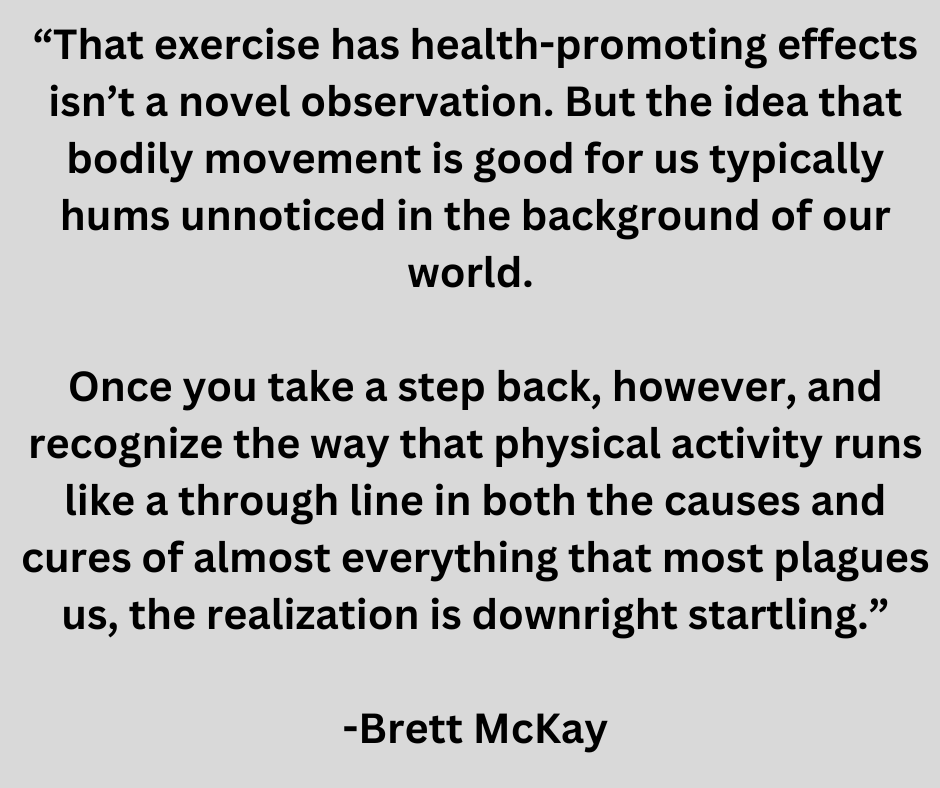Longevity Bloomington Newsletter # 13 - The Importance of Muscle Mass
Research Roundup - The importance of maintaining and building muscle mass as you age
This month, we are going to focus on the importance of maintaining and, ideally, increasing muscle mass as you age. The involuntary loss of muscle mass and strength as you age is termed “sarcopenia”. There are many reasons a person loses muscle mass over time, but today we are going to focus on two: inactivity and inadequate nutrition. Before we discuss how to increase muscle mass and function, we need to talk about a few of the wonderful functions of skeletal muscle.
The Functions of Skeletal Muscle
1. Strength
The most obvious function of skeletal muscle is its ability to enable you to move and perform daily activities. Generally, the more muscle strength you possess, the easier it will be to perform tasks of daily living such as laundry, going to the grocery store, picking up your grandchildren and going up and down steps.
Reduced muscle strength is associated with an increased risk of falling and suffering a fracture. Lower levels of muscle strength also increase the risk of losing your physical independence. A 2017 study found that individuals were 12 times more likely to lose their physical independence if they possessed both low muscle mass and low muscle function.
Furthermore, life is just easier with more strength. If the most you can lift is 20 pounds and the laundry basket weighs 18 pounds, you are working at 90% of your capacity. You are working very close to maximum effort just to accomplish daily tasks!
Why is this important?
Working at 90% of your capacity is exhausting!
If your overall physical capacity is low and your daily activities (going up and down steps, lifting and carrying groceries, mowing the lawn, etc.) are at a near maximum effort, life is going to be hard. You are going to be tired and without energy to do the things you want to do.
So what can we do about this? INCREASE YOUR CAPACITY through exercise!
If we can increase the amount you can lift from 20 pounds to 75 pounds, that 18 pound laundry basket is now only 25% of your maximum capacity. Now, laundry day is much less exhausting and you can have energy left in the tank to do the things you want to do.
2. Skeletal Muscle as an Endocrine Organ
Recent research has discovered a fascinating new fact: skeletal muscle functions as an endocrine organ. Your endocrine system is a complex set of organs and glands that release chemical messages (hormones) into the blood to control functions such as metabolism, blood pressure, sleep and many others. Examples of other endocrine organs include your thyroid, pancreas and pituitary gland.
When you exercise, your muscles release chemicals into your blood called myokines. These chemicals then travel to other organs and exert widespread anti-inflammatory effects. One example of this effect is the ability of myokines to improve fat metabolism and reduce fat around your organs. This reduction in fat around your organs ultimately reduces the risk of cardiovascular disease, diabetes, dementia and some types of cancer. See the graphic below for the many favorable effects myokines have on other organs.
From the paper above: “skeletal muscle, under the simple, physiological stimulus of exercise, may behave as an endocrine organ, producing a variety of agents with favorable metabolic actions. This has shed light to the mechanisms through which physical exercise protects against the development of disease and promotes longevity.”
3. Skeletal Muscle is the Primary Location for Blood Sugar (Glucose) Uptake After a Meal
After you eat a meal, blood sugar levels rise as your body begins to break down the food. If your blood sugar levels remain elevated for a long period of time over many years, you could eventually develop type 2 diabetes. The importance of adequate muscle mass in reducing your risk for type 2 diabetes cannot be overstated.
Skeletal muscle is essential for blood sugar clearance. It is the largest organ in the body by mass and is responsible for 80% of blood sugar uptake after a meal. Low levels of muscle mass have been shown to increase your risk for type 2 diabetes compared to individuals with more muscle mass.
Now that we have established muscle serves a wide array of important functions, how do you improve both muscle mass and muscle function? The two primary methods are exercise and adequate nutrition.
1. Exercise to improve muscle mass and function
The research is clear: resistance training should form the cornerstone of your exercise program to combat low levels of muscle mass.
A research paper published this year states: “The recommendation to use resistance exercise as a treatment for sarcopenia is underpinned by robust evidence demonstrating that resistance exercise programs can, under controlled conditions, improve muscle strength, mass and physical performance in middle-aged and older adults.”
The paper recommends the resistance exercise program should consist of (at least) two full-body exercise sessions per week performed with a relatively high degree of effort.
Reminder: “We conclude that there are no nonresponders to the benefits of resistance-type exercise training on lean body mass, fiber size, strength, or function in the older population. Consequently, resistance-type exercise should be promoted without restriction to support healthy aging."
2. Nutritional Recommendations for the Management of Sarcopenia
There is still a lot more nutrition research that needs to be done to determine the optimal nutritional strategy to combat low muscle mass. With that being said, it really boils down to getting enough protein and calories in your diet to ensure your body has the building blocks it needs to build muscle following resistance training.
As we have discussed in previous newsletters, adults 50+ do not process protein as efficiently as younger adults and therefore actually need more protein than their younger counterparts. As a starting point, try to consume half of your body weight in grams of protein. For example, if you weigh 150 pounds, aim for consuming 75 grams of protein per day.
If you would like more details regarding specific nutritional recommendations to manage sarcopenia, you can click here: https://www.ncbi.nlm.nih.gov/pmc/articles/PMC4623318/
Free Longevity Bloomington Yoga Class
Please join us for a free yoga class on 1/7/23 at Full House Fitness from 1:00-2:00 PM. This free class will serve as a preview for our newly added yoga class at Longevity Bloomington that will begin on 1/9/23 at Full House Fitness. If you enjoy the free class, you can sign up for ongoing yoga classes that are specifically designed for adults 50+.
The ongoing yoga class will meet on Mondays and Wednesdays from 2:00-3:00 PM and is open to any adult 50 years or older. No prior yoga experience is required. You do not need to be a current participant in the Longevity Bloomington functional fitness class to join the yoga class.
The class will be led by Patricia Pauly. Patricia has been teaching yoga for six years in a variety of settings. She holds a 500-hour advanced training certification in yoga teaching and has worked extensively with students over 50. Her classes are designed to accommodate all fitness levels and those with no prior yoga experience.
This class is designed to build overall strength and improve balance. As we work to build strength and balance, you will be refining your breathing technique and cultivating ease in your joints. You may also find that you experience greater mindfulness, a reduction of stress, and improvements in your sleep quality.
In a typical class, we will gently warm up the spine, move into poses that are intended to build strength, work on standing balances, and finish with a stretching sequence designed to improve range of motion and flexibility. We will use blocks and other props to make the poses more do-able and comfortable.
The free class will be limited to 20 participants and we only have 8 spots remaining so sign up today!
You can reserve your spot for the free class here: https://www.eventbrite.com/e/free-longevity-bloomington-yoga-class-tickets-490006561817
Longevity Bloomington Social Media
Here are a few posts from our social media accounts this month:
If you would like future newsletters sent to your inbox, you can subscribe here: https://bit.ly/longevitybtown








